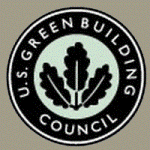|
|
Hidden Ways to Green-Up Your Home
 (ARA) - Building or remodeling a home can be exciting -- and nerve wracking. Homeowners face a seemingly endless array of decisions, from paint color to landscaping, and, more recently, how their choices will impact the environment. Fortunately, it is not complicated to build a “green” home -- one that is energy efficient, uses renewable materials and is healthy for your family and the environment. (ARA) - Building or remodeling a home can be exciting -- and nerve wracking. Homeowners face a seemingly endless array of decisions, from paint color to landscaping, and, more recently, how their choices will impact the environment. Fortunately, it is not complicated to build a “green” home -- one that is energy efficient, uses renewable materials and is healthy for your family and the environment.
The National Association of Home Builders (NAHB) predicts that by 2010, up to 50 percent of new homes will contain significant green elements. Already, green materials are used in 40 percent of remodels. Many consumers know that energy-efficient appliances and compact fluorescent bulbs can make a difference, but may overlook other ways to make their home even more environmentally friendly.
Because framing materials -- the home’s skeleton -- are hidden behind finished walls and floors, homeowners may not think about their role in green building. But since framing is among the largest volumes of materials used in the home, it is important to consider the products being used.
Approximately 90 percent of American homes are framed with wood, including both conventional lumber and specialized wood products. “Many homeowners and builders take wood for granted,” says Bob Mang of iLevel by Weyerhaeuser. “However, because it’s renewable, comes from nature and supports energy efficiency, they can feel good about using it in their green home.”
When working with your builder to incorporate green framing and other elements into your home, remember these four points:
* Energy Efficiency
Reducing energy usage and costs are among homeowners’ biggest concerns. Two ways to do this are with energy-efficient appliances, water heaters and furnaces, and ensuring that heat stays inside -- or outside -- the home.
In addition to adequate insulation and well-sealed windows and doors, the structural framing materials can help reduce heat loss. Engineered materials like TimberStrand laminated strand lumber (LSL) and Parallam parallel strand lumber (PSL), as well as standard lumber, are excellent insulators. The individual cells within wood fibers trap air, while alternative framing materials, such as steel or concrete, require additional insulation to guard against heat loss.
* Renewable Resource
Incorporating renewable, natural materials, such as wood, can go a long way toward creating a green home. Commercially harvested trees today are typically grown in managed forests that are promptly replanted, and actions are taken to protect water quality and wildlife habitat. Despite a common misconception that forests are shrinking, the United States today has about the same amount of forested acres as it did nearly 100 years ago. According to a study by Clemson University and the American Forest and Paper Association, annual forest growth currently exceeds the amount harvested by about 47 percent.
* Efficient Materials Usage
While wood has been used in homes throughout history, manufacturing processes today allow for more efficient use of the raw logs and for large beams to be made from small, fast-growing trees. Exceptionally strong framing materials such as TimberStrand LSL and Parallam PSL, as well as Structurwood oriented strand board (OSB) and TJI or Silent Floor joists are manufactured from wood strands that are bound together with adhesives under heat and pressure. Such products use smaller size trees than conventional lumber products and utilize almost every portion of the log for the final product or to fuel the plant, minimizing waste.
* Green House Gas Reduction
As global warming concerns grow, homeowners can help reduce greenhouse gases like carbon dioxide (CO2). Choosing energy efficient appliances and lighting lessens emissions from burning fossil fuels, while selecting wood building materials can actually help remove CO2 from the atmosphere. As trees grow, they convert CO2 to carbon, which remains stored in the wood long after the tree is harvested. The benefits are substantial: the wood framing in a typical suburban home stores a volume of CO2 equal to the emissions from a small car over seven years.
As you look for ways to make your home green, keep in mind the products you see, as well as the hidden ones. For more information on wood structural framing, visit www.ilevel.com or call (888) 453-8358 to speak to an iLevel by Weyerhaeuser representative.
Courtesy of ARAcontent

 If you are looking for a
Denver GREEN building contractor, please call us today at 303.274.0489 or complete our
online request form. If you are looking for a
Denver GREEN building contractor, please call us today at 303.274.0489 or complete our
online request form.
|



